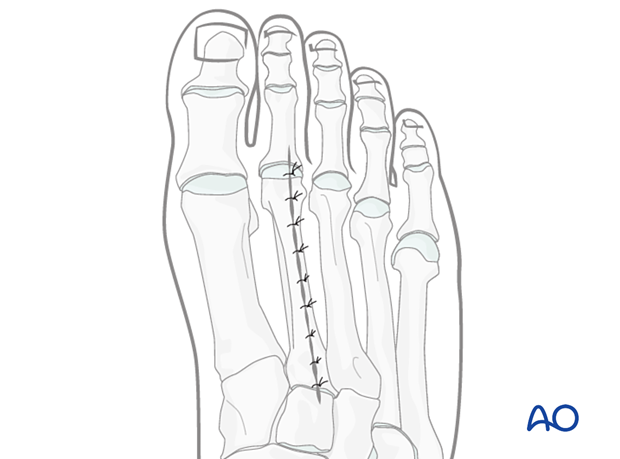Dorsal approach to single metatarsals 2-4
1. Indications
This dorsal approach can be used to access a fracture of a single metatarsal.
If access to multiple metatarsals is required, a different approach should be used.
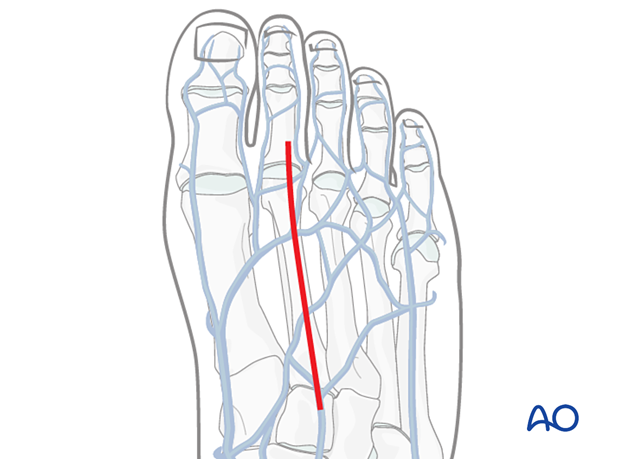
2. Anatomy
Important relevant anatomical structures are:
- The extensor digitorum brevis and longus
- The digital arteries and nerves
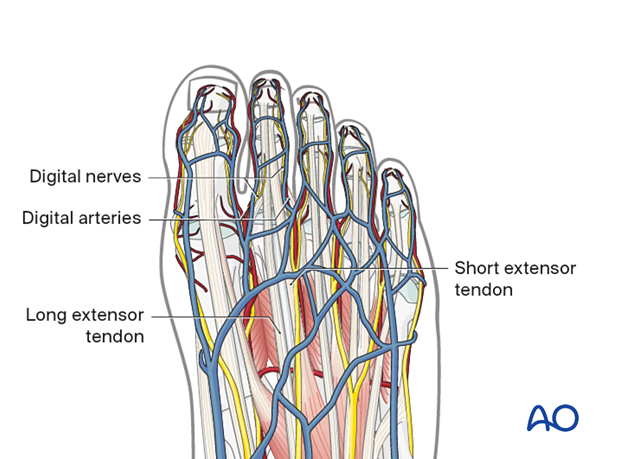
3. Skin incision
The skin incision is centered over the fracture and made in line with the long axis of the bone.

4. Deep dissection
Protect any longitudinal veins traversing the field.

Retract the EDL tendon laterally and expose the metatarsal.
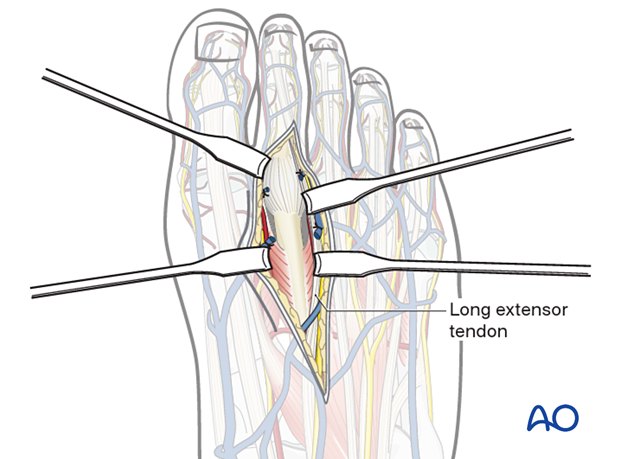
Visualization of the articular surface
Incise the joint capsule medial to the EDL tendon to expose the metatarsal head and base of the proximal phalanx.
If additional exposure is required, sharply release the medial and lateral collateral ligaments. Plantar flex the great toe to visualize the articular surfaces of the joint. A mini distractor applied dorsomedially may be useful for visualization.
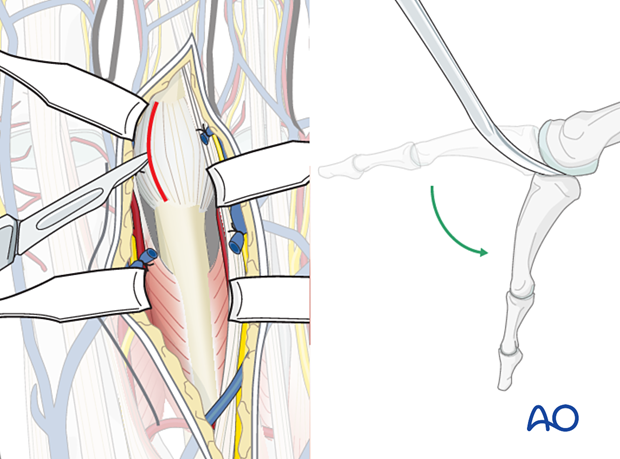
5. Closure
Close the joint capsule using resorbable sutures.
Perform a subcuticular closure with resorbable sutures.
Skin should be closed with appropriate sutures. Nylon sutures are typically used.
